Local Attorney Starts Groundwork to Honor Clyde Foster
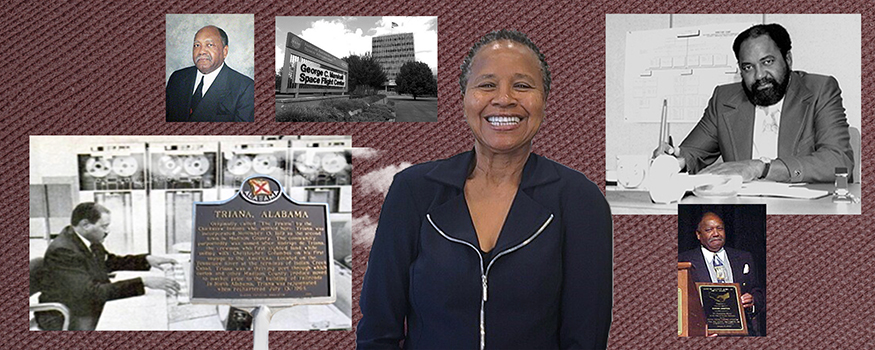
Remembering AAMU's True 'Renaissance Man'
Few men have made a societal impact that stretches across so many distinct categories as has Clyde Foster. The Alabama A&M University alumnus was a pioneer whose life was a catalyst in computer science, in the chronicles of a local municipality, at NASA, in the civil rights movement, and in sectors of public education.
Attorney Juanita Sales Lee, retired Chief of General and Administrative Law Division at the U.S. Army Space Missile Defense Command, believes much more needs to be done to pay tribute to the quiet giant of a man. Foster’s contributions, Lee asserts, were nothing short of phenomenal. Her quest to coordinate a sustained and substantial celebration of Foster began more than a year ago, when she began recounting his significance to various prospective supporters.
A former national president of the Federal Bar Association, Lee has been tireless in her pursuit of the tribute to Foster. Often, she has had to rebuild an obvious case.
About Clyde Foster and His AAMU Connection
Clyde Foster was born in 1931 in Birmingham, Ala., where he was educated in the public school system and was likely mesmerized in his early school years in the Magic City by the mighty Maroon and White Bulldogs of Alabama A&M University. After high school, Foster selected AAMU from a pool of primarily historically black colleges and universities.
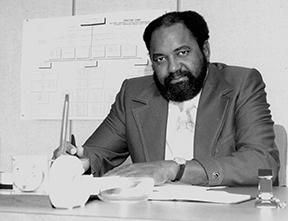 Upon graduation from Alabama A&M University in 1954, Foster was drafted into the U.S.
Army. He served for two years, one year stateside and the other in Germany. After
his military service, he taught briefly and his wife assisted him in completing an
application to Redstone Arsenal, where the Army Ballistic Missile Agency was located.
Upon graduation from Alabama A&M University in 1954, Foster was drafted into the U.S.
Army. He served for two years, one year stateside and the other in Germany. After
his military service, he taught briefly and his wife assisted him in completing an
application to Redstone Arsenal, where the Army Ballistic Missile Agency was located.
As early as 1952, Foster was part of a group of AAMU science students formed by Werner
von Braun to put on a demonstration at the old Butler High School (later Stone Middle
School). The purpose of the presentation was to help von Braun warm up the Huntsville
“majority” population to the potential of a space program. There was a sentiment
that Alabama’s bad image when it came to 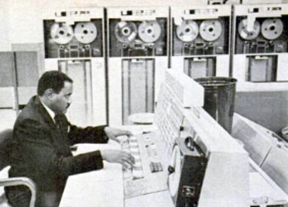 race relations would tarnish the hopes for a growing space program at Marshall. Additionally,
some local citizens were harboring feelings of resentment about the post-World War
II group of German scientists that the federal government had brought to Tennessee
Valley soil.
race relations would tarnish the hopes for a growing space program at Marshall. Additionally,
some local citizens were harboring feelings of resentment about the post-World War
II group of German scientists that the federal government had brought to Tennessee
Valley soil.
The December 1968 edition of The Normal Index heavily focused on the University’s new Bachelor of Science degree program in computer science. Foster served as a the director of AAMU’s Computer Science Center, taking a nearly two-year-long leave from his duties at NASA/Marshall Space Flight Center at Redstone Arsenal in Huntsville, Ala. The Center was located within the Division of Technology, then chaired by Dr. Walter H. Hollins. Foster was ably assisted by 1962 Morehouse alum Nathaniel E. Griffin, who worked part-time at the Computer Science Center as an instructor. His full-time duties were given to the Computer Sciences Corporation (CSC) in Huntsville.
The Center at AAMU that Foster facilitated was equipped with state of the art technology for the period. The brand new IBM 360 Model 30 permitted AAMU major strides in research and development. It also allowed more automation of administrative tasks in key units, such as the offices of the Registrar, Dean and Business Administration. Finally, Foster’s landmark Center enabled students to train for and to graduate with a degree in computer science, the first such degree offered in Alabama.
Thus, during a time when the U.S. was consumed with the Vietnam War, civil rights issues, and a growing drug culture, among many others problems, Foster was attuned to the propensity of computing to speed up routine operations and to free staff “to concentrate on problems which can be solved by man.”
But Foster brought AAMU into a new age in ways beyond a strong computer curriculum. Only a few years after he began working for NASA, Foster became irate when a supervisor expected him to train a white co-worker to become his boss. He went on to demand training programs for black workers despite segregation. Compromising the need with the times, NASA agreed to hold separate training sessions for black workers at Alabama A&M, frequently bringing in instructors from out of town. Nonetheless, over 100 black NASA employees took advantage of the separate-but-equal training.
It can be said that Foster helped propel AAMU into a new frame of thinking in terms of opportunities for its students. As a product of the post-Civil War era, AAMU had successfully prepared its students to become well prepared to secure the jobs assigned to black people in a hostile Jim Crow South. Many of those jobs centered around such vocations as teaching, nursing, farming and some technical aspects. Thus, when Foster approached a Civil Rights era administration about establishing a computer science curriculum to prepare students to send rockets into space, there was understandable skepticism. AAMU had the tools to prepare students to build on earth. Foster’s big task was to convince administrators to think bigger and to believe they could build in space. He ultimately succeeded, and his alma mater became the first Alabama university to offer a computer science degree program.
Foster and Public Education
In addition to his many contributions to Alabama A&M University, Foster impacted public education early on in his career. Following his stint with the military, the AAMU alumnus landed a teaching job near Selma, Ala., although he wanted to move back to the Madison County vicinity and did. He served on the Alabama Commission on Higher Education, on an appointment made in 1974 by Alabama Governor George Wallace, and he was reappointed by Governor Fob James. Representing Triana, Ala., Foster was a force on the committee that impacted the formation of the Madison (Ala.) City School System.
Foster and NASA
Foster worked at the Army Ballistic Missile Agency until the formation of NASA’s Marshall Space Flight Center in 1960. He then transferred into the space program. At that post, Foster started out as a physical science aide and later a mathematics aid in the Computation Laboratory. After completing additional mathematics courses, the young pioneer boosted his classification to mathematician in the Computation Laboratory. This allowed him further entry into the world of computers, mathematical modeling, and computer programming. He remained at the lab for nearly 20 years, and he was one of only a dozen or so blacks working in a technical field. One of his culminating roles was his work as part of the Apollo space program.
Foster’s history is interwoven with NASA’s. President John F. Kennedy was faced with the need to deal with the “space race” and race relations at the same time. Sensing a correlation between Southern poverty and Southern racism, NASA was a tool used by the federal government as one means of achieving racial integration in the early 1960s through the infusion of good paying jobs into the Southern economy.
Foster’s role in diversifying NASA, after moving into its EEO Office, and, in effect, transforming Huntsville into a desirable and progressive place to live and work, has been recorded by numerous sources. For instance, PBS.org (PBS.org – “Another Hidden Figure: Clyde Foster Brought Color to NASA” – 2019) recognized Foster’s role in recruiting hundreds of African-American individuals to the rolls of the space program in Huntsville, Ala.
Foster’s Entry into Civil Rights
Foster’s move within NASA to its Equal Opportunity Employment Office in the mid-1970s was a major catalyst for change. He always counted his blessings, while earnestly realizing the negative impact that a lack of educational resources had on so many young black men and women his age throughout the Tennessee Valley and beyond. In an April 1990 interview with NASA’s Marshall Space Flight Center, Foster noted that a segregated, dual system of education left blacks in Madison County with only one high school, which was located in Huntsville, Alabama. That meant that those without the luxury of transportation to attend that one institution were left without the educational resources of a high school education.
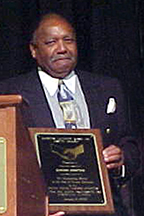 Thus, when the robust launching of the space program occurred in Huntsville, many
blacks were left out because they had not been able to climb upon foundational rungs
of educational access that many of the jobs required. Nonetheless, Foster courageously
encountered those barriers and even many more when it came to accessing opportunities
for professional development on what he termed “the reservation.”
Thus, when the robust launching of the space program occurred in Huntsville, many
blacks were left out because they had not been able to climb upon foundational rungs
of educational access that many of the jobs required. Nonetheless, Foster courageously
encountered those barriers and even many more when it came to accessing opportunities
for professional development on what he termed “the reservation.”
Foster ably explained the hardships to upward mobility he experienced within the profession solely due to the problem of public accommodation. Often, training sessions and activities potentially leading to upward mobility were held in venues off-limits to African Americans and during a period in history when blacks were denied access to businesses and restaurants. Even if blacks made up significant numbers in Arsenal’s workforce at that time, Foster said that it was highly likely that “the power structure” would have found ways to deny their mobility.
Foster and Triana, Alabama
Not more than a decade after Clyde Foster’s graduation in 1954, staff at Alabama A&M University became increasingly aware of his burgeoning leadership abilities. According to the May 1965 edition of The Normal Index (p. 9), the long-time University magazine, Foster was encouraged by Triana, Ala., town elders to apply his energies toward reviving the village to its former glory. That meant that he would first have to convince local authorities that the community literally was worth placing on the map.
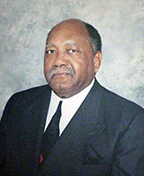 Cool persuasion, backed by a humble display of knowledge and tenacity would become
a trademark of Foster. The University’s account records that young Foster, the proud
product of Alabama A&M University (then College), was able to bring a fledgling hamlet
back to life. Through Foster’s tireless efforts, on July 10, 1964, the Probate Judge
of Madison County reinstated the town charter, along with granting full powers to
the town mayor (Foster) and town officials (alums William Griffin, council chairman;
and Robert C. Bailey, police chief). Many years later, Foster also led a legal battle
against a chemical company that had poisoned the town’s waterways with DDT, resulting
in a $24 million settlement for Triana residents.
Cool persuasion, backed by a humble display of knowledge and tenacity would become
a trademark of Foster. The University’s account records that young Foster, the proud
product of Alabama A&M University (then College), was able to bring a fledgling hamlet
back to life. Through Foster’s tireless efforts, on July 10, 1964, the Probate Judge
of Madison County reinstated the town charter, along with granting full powers to
the town mayor (Foster) and town officials (alums William Griffin, council chairman;
and Robert C. Bailey, police chief). Many years later, Foster also led a legal battle
against a chemical company that had poisoned the town’s waterways with DDT, resulting
in a $24 million settlement for Triana residents.
This push toward the revitalization of the Town of Triana was conducted simultaneously, as Foster was chartering new territory as a pioneering African-American mathematician and computer scientist with NASA. In fact, in 1965, widely respected Ebony magazine ran a photograph of Foster processing telemetry in a computer lab within the Marshall Space Flight Center. The issue also acknowledged the young Foster as “a leader in getting jobs and advancing engineering education for African Americans.”
Tributes to Foster
“Clyde Foster left a legacy which should be recognized and celebrated,” stated Attorney Lee, in one of her appeals to AAMU administrators, securing their participation in a slate of activities planned for 2023. Other entities involved in the planned celebration include the William Hooper Councill Community Development Corporation, Career Communications Group, Inc./Becoming Everything You Are (BEYA), NASA/Marshall Space Flight Center, the City of Triana, Alabama, and others.
Lee is also facilitating a STEM event in February 2023 that will feature Dr. Calvin Mackie, a mentor, motivational speaker and entrepreneur.
The culmination of tributes could occur in March 2023, the application deadline for Foster’s nomination for induction into the Alabama Men’s Hall of Fame. The distinction recognizes Alabamians who have made significant contributions on a state, national or international scale within their professional field of activity.
Several years ago, AAMU recognized Foster’s numerous contributions when it named the Clyde Foster Auditorium, located in the complex of the College of Business and Public Affairs/Office of the President.
He was also a champion of the erection of the William Hooper Councill statue on the AAMU campus nearly 20 years ago.
Given her passion, Lee will make Clyde Foster’s name familiar in homes throughout the Tennessee Valley and beyond.
- Jerome Saintjones
 Skip to content
Skip to content